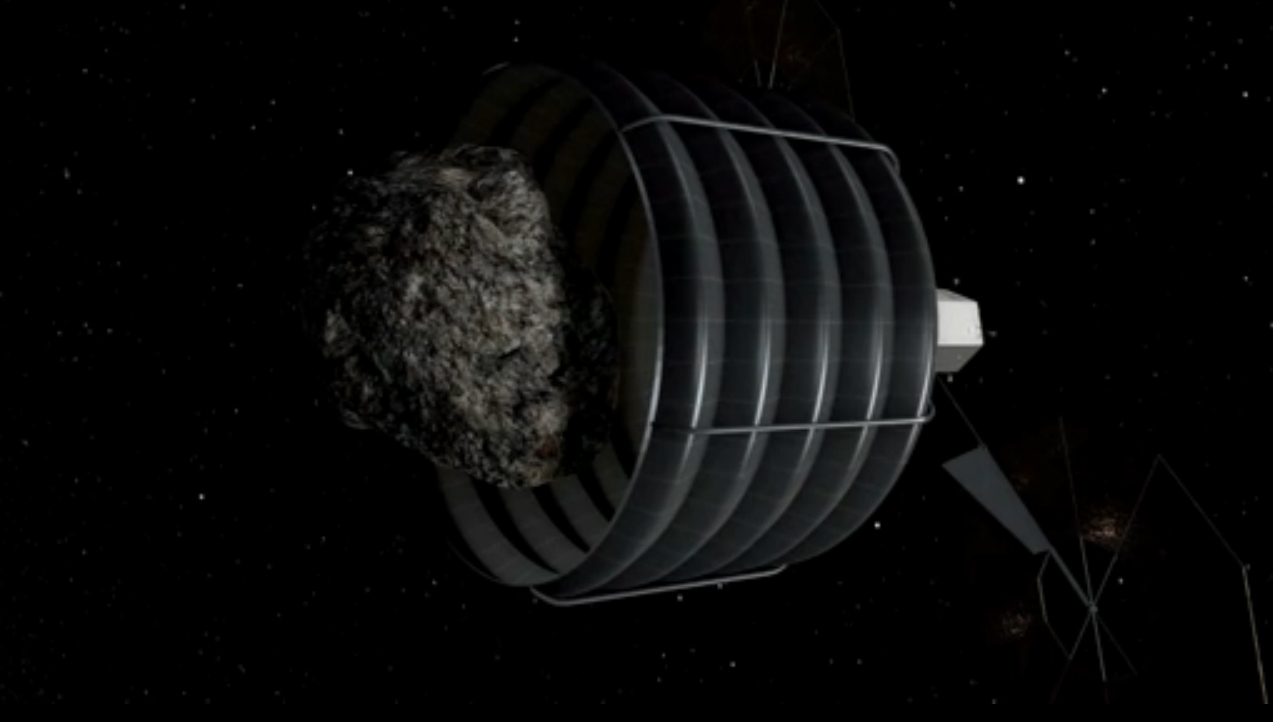
NASA is making progress on one of the most challenging parts of its ambitious asteroid-retrieval mission — finding a suitable rock to shrink-wrap in space.
Scientists have identified a dozen or so promising targets for NASA's asteroid-capture mission, which seeks to drag a small rock — or a piece of a larger one — into a stable orbit around the moon, where it would be visited by astronauts by 2025.
"For either concept that's being looked at right now — either the capture of a small asteroid less than 10 meters in size, or going after a boulder, large boulder, on a larger asteroid — we have a list of about six or so candidates each," Lindley Johnson, program executive for NASA's Near-Earth Object (NEO) Observations Program, told reporters Friday (March 21). [NASA's Asteroid-Capture Mission in Pictures]
"We continue to look for additional candidates," Johnson said, adding that NEO program scientists "will continue to do that over the next two to three years, until the time comes to actually determine which will be the best object for the mission."
The NEO program's primary purpose is identifying and tracking potentially dangerous asteroids. But good capture candidates are a subset of this larger group, Johnson said, so assessment of their suitability for the redirect mission doesn't take NEO scientists too far afield.
The asteroid-redirect mission would use a robotic probe to move the targeted space rock into Earth-moon space. The asteroid would then be visited, perhaps multiple times, by astronauts using NASA's Orion capsule and Space Launch System rocket, which are slated to fly crews together for the first time in 2021.
NASA wants the first manned visit to the retrieved asteroid to come around 2025, which would mesh well with an exploration timeline laid out by the White House. In 2010, President Barack Obama directed NASA to get astronauts to a near-Earth asteroid by 2025, then on to the vicinity of Mars by the mid-2030s.
Get the Space.com Newsletter
Breaking space news, the latest updates on rocket launches, skywatching events and more!
The mission will serve as a stepping stone, NASA officials have said, demonstrating technologies that will allow humanity to reach Mars and other destinations in deep space. It will also advance scientists' understanding of the early solar system and help develop asteroid-mining technology and know-how, advocates say.

The space agency hopes to have a basic mission concept in place by around the end of the year, officials said Friday, though some components of the architecture may be changed, added or refined thereafter.
Follow Mike Wall on Twitter @michaeldwall and Google+. Follow us @Spacedotcom, Facebook or Google+. Originally published on Space.com.
Join our Space Forums to keep talking space on the latest missions, night sky and more! And if you have a news tip, correction or comment, let us know at: community@space.com.

Michael Wall is a Senior Space Writer with Space.com and joined the team in 2010. He primarily covers exoplanets, spaceflight and military space, but has been known to dabble in the space art beat. His book about the search for alien life, "Out There," was published on Nov. 13, 2018. Before becoming a science writer, Michael worked as a herpetologist and wildlife biologist. He has a Ph.D. in evolutionary biology from the University of Sydney, Australia, a bachelor's degree from the University of Arizona, and a graduate certificate in science writing from the University of California, Santa Cruz. To find out what his latest project is, you can follow Michael on Twitter.









